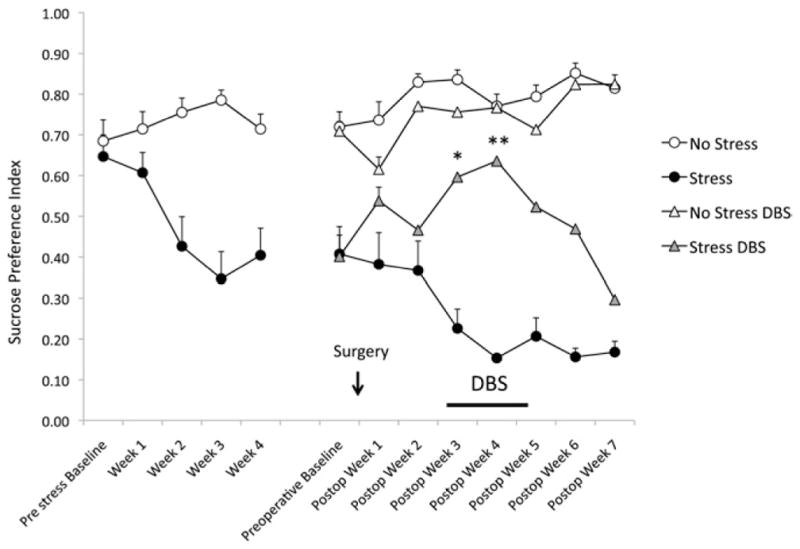Figure 2.

Changes in sucrose preference index (SPI) as a function of stress and deep brain stimulation (DBS). The figure is divided in two parts, before and after surgery (arrow). Before surgery, rats were exposed to chronic unpredictable mild stress or remained in their home cages for 4 weeks. Except for baseline, all points were statistically different between stressed and nonstressed animals (p < .03). Indicators of statistical significance were omitted for clarity. In the preoperative baseline assessments immediately before surgery, one may notice that SPI in stressed and nonstressed animals to undergo DBS or sham surgery were similar. Stress was reinitiated 1 week after the procedure. DBS (8 hours/day) was commenced on the third postoperative (postop) week and continued for 2 weeks (horizontal bar). On the first week after stimulation onset, SPI in stress DBS animals (n = 9) was significantly different from those recorded in the stress alone group (n = 9, p < .002*). Differences were even more accentuated on the second week of stimulation (p < .0001 vs. stress alone**) with SPI in DBS-treated stressed animals, reaching levels comparable to those of nonstressed control subjects. Thereafter, stimulation was discontinued for the assessment of changes in hedonic-like behavior. Decrease in sucrose preference was gradual, with values approximating preoperative baseline levels only 3 weeks later. No significant differences were observed between nonstressed animals that did (n = 10) or did not receive DBS (n = 10).
